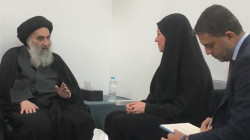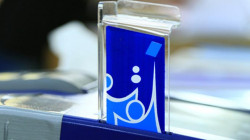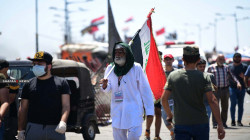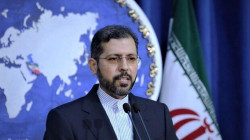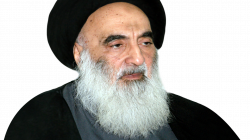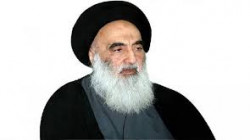The Iraqi army.. From "Imam Musa Al-Kadhim" to "Al-Sistani", 100 years of stormy transformations
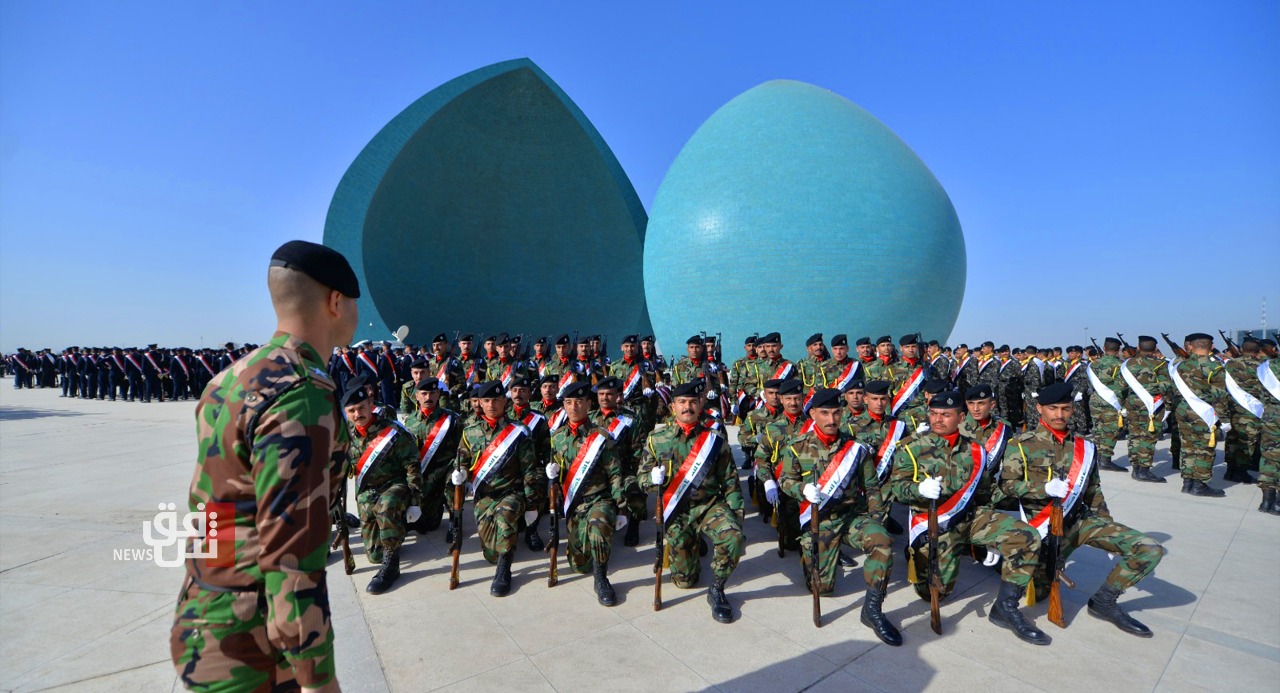
Shafaq News / It is known that Iraq's land has embraced some of the oldest civilizations known to mankind, as well as the first armies formed hundreds of years B.C. However, the modern era's Iraqi army's 100th anniversary is an occasion to monitor its emergence and the stormy transformations that struck it; from the first regiment bearing the name "Imam Musa al-Kadhim" 100 years ago, to the current stage, in which it ranks 50th in the world.
The Iraqi army has played significant roles in internal events since its founding under King Faisal I; both in the 1941 war against British forces that controlled Iraq - i.e. during world war II and contributed to the army's establishment - or in military coups that toppled successive regimes and governments - including the first military coup in the Arab world - to the brutal war it fought against the most dangerous terrorist organization known to mankind, ISIS.
According to the "Global Fire Power" website - specializes in monitoring the countries' military capabilities - Iraq is ranked 50th in the world by the 2020 list. While Iran ranked 14th, Turkey 11th, Syria 55th, Jordan 72nd, Kuwait 85th, and K.S.A. 17th.
However, that is very much at odds with the post-Saddam Hussein war's against Iran that ended in 1988; in which Iraq was classified as the world's fourth-largest army, with a number of one million troops.
Experts say that between the late 1970s and the mid-1980s, the Iraqi army underwent profound changes in its size, structure, weapons, and deployment.
Between 1980 and the summer of 1990 - just before the invasion of Kuwait - Saddam Hussein increased the force's size from 180,000 to 900,000; with a capacity of two million troops. At the time, it accounted for 75% of The Iraqis between the ages of 18 and 34. The number of tanks has increased from 2,700 to 5,700, and artillery pieces from 2,300 to 3,700.
According to the "Federation of American Scientists" website, the transformation has been dramatic and Iraq has expanded its efforts to rearm significantly during the Iraq-Iran war. After the war entered its eighth year in September 1987, Iraq became the world's largest arms market. In addition to purchases from the Soviet Union and France, Iraq sought to buy weapons from China, Germany, Italy, Brazil, Poland, Czechoslovakia, Egypt, and other countries.
The American Arms Control and Disarmament Agency estimated in 1987 that Iraq had bought 24 billion dollars worth of weapons between 1981 and 1985 alone.
But all of those resources became almost useless after Saddam Hussein embarked on an absurd military "adventure" by invading Kuwait in 1990. It later led to the destruction of a large part of the Iraqi army.
According to U.S. military estimates, about half of Iraq's tanks and armored vehicles were destroyed in the so-called "Desert Storm" that drove the Iraqi forces out of Kuwait and penetrated more than one Iraqi border area.
Then the Iraqi army was no longer the fourth globally, as it was once classified. The international sanctions imposed on Iraq have done great harm to The Iraqi armed forces; particularly after the United Nations, with US-British support, imposed the dismantling of the army's ballistic missile arsenal.
The exhausted Iraqi army was hit by the most severe storm in 2003, when the United States and Britain led a ground, air, and sea invasion. It ended in taking control of Baghdad and various parts of Iraq, and the fall of Saddam Hussein's regime.
In addition to the heavy losses inflicted on it by the attacking forces, came a major turning point in the Iraqi army's march; with the civilian governor, Paul Bremer's decision to disband the armed forces and all the security services – after which the army was reconstituted, trained, and armed per new standards and principles.
History carries a remarkable paradox in the Iraqi army's journey.. since the army dissolved by Bremer was not comparable to the army founded by British Mandate Commissioner, Percy Cox, after the Iraqi revolt of 1920's outbreak against the British occupation.
The first minister of defense was Jaafar Abdul Rahman Jaafar Al-Askari Al-Nuaimi. The first force in the army was the "Imam Musa al-Kadhim Regiment", and it included several officers and soldiers who were fighting in the Great Arab Revolution's ranks or were part of the Ottoman army and defected from it.
The British were encouraged to form the new Iraqi army after the 1920's revolution caused heavy losses to British troops. London wanted to reduce the cost of its military presence in the region, and the creation of the national army was the first step to entrust it with military responsibilities rather than the British.
King Faisal wanted to name the First Regiment as "Miss Bell" – after Gertrude Bell, one of Percy cox's assistants who lived in Iraq for many years and helped arrange its affairs after World War I - but Jaafar Al-Askari stuck to "Imam Musa Al-Kadhim" as the regiment's name on January 6th, 1921.
The registration of volunteers in the first regiment began in June 1921. Other regiments were formed in the following months, mainly replacing British troops withdrawn as part of the troop reduction plan. Britain has contributed significantly to arming and training the Iraqi army in the following years – per agreements and treaties regulate Baghdad and London relations.
Nevertheless, a major development regarding the Iraqi army took place during the "July Revolution" in 1958.. particularly within the framework of cooperation agreements with the countries of the socialist system. A march that continued up to Saddam Hussein's era, and then the military scene was completely different. The Americans became the armed forces' guardians during the rule of Paul Bremer, and then in the post-2008 US-Iraqi agreement that regulated the military relationship between the two sides.
As for the most prominent battles - in which the new Iraqi army took part – is May's war against British troops in 1941.. British troops entered Iraq without permission, as part of a move London considered at the time in the context of world war II; a battle that ended with the British entering Baghdad.
Then the battles of what was known as the Palestine war in 1948, when Arab armies moved to prevent the control of the so-called Zionists on Palestine. Iraq participated with thousands of soldiers, dozens of tanks, and artillery pieces. It ended with the defeat of Arab armies, the occupation of large parts of Palestine, and the declaration of Israel's establishment.
This was not the only Iraqi military presence in Arab issues. In the 1973 October War, the Iraqi army also participated in large forces supporting the Egyptian-Syrian offensive on the frontlines with Israel; through tens of thousands of soldiers, hundreds of tanks, armored vehicles, artillery pieces, as well as army aircraft.
There is, of course, Saddam Hussein's war with Iran from 1980 to 1988. Saddam's invasion of Kuwait in 1990, the second Gulf War in February 1991 that caused heavy losses to the Iraqi forces, and the war that broke the Iraqi army in 2003.
Domestically, the Iraqi army has been embroiled in internal wars.. as in the battles it fought in the name of the "September Revolution" led by Mala Mustafa Barzani between 1961 and 1970. Then the so-called Iraqi-Kurdish war in 1974 and 1975 when the army attacked the deployment areas of the Kurdistan Democratic Party (K.D.P.) forces led by Mala Mustafa Barzani; it led to the conclusion of the so-called Algiers Agreement by Iraq and the Shah of Iran.
The army was also used to quell the Kurdish and Shiite uprising in 1991 after Saddam Hussein was defeated in his reckless military adventures in Kuwait.
The Iraqi army had other internal roles. For example, General Bakir Sidqi led the first military coup in Iraq and the Arab region; overthrowing Yassin Al-Hashimi's government in 1936 and assassinating Jaafar Al-Askari, the first military defense minister.. pressuring King Ghazi to form a new government, in which Bakir Sidqi was appointed army chief of staff.
The army also took part in the 1941 coup that temporarily expelled King Faisal II from Baghdad. The army also carried out the 1958 Coup d'état, led by Colonel Abdul Karim Qassem, overthrowing the monarchy, killing Prime Minister Nuri Al-Said, and declaring the establishment of a republican regime. Only five years later, in 1963, army divisions carried out a coup against Abdul Karim Qassem, which ended in killing him.
But the Iraqi army, which has fought regional battles and major wars, and contributed to the coups and reshaping of Iraqi political regimes over the decades, suffered a major setback that no one expected.
In 2014, ISIS militias invaded the army's positions in Mosul, Tikrit, Al-Anbar, and western Iraq in general; despite the existence of large military bases supposedly comprising tens of thousands of soldiers and sophisticated weapons -most of which are part of cooperation agreements with the United States.
Subsequent investigations showed that the rampant system of corruption in the military, and the ghost soldiers' phenomenon - who escaped from their military service centers in collusion with corrupt officers - contributed, among many other factors, to this disaster.
The defeat came nearly three years after U.S. combat troops withdrew from Iraq in line with the 2008 accord; forcing Baghdad to re-ask Washington for its support to combat ISIS.
Many observers agree that the call for "jihad" by the supreme Shiite cleric Ali Al-Sistani - to take up arms and join the armed forces to prevent more areas from falling to ISIS - has helped save the Iraqi army from complete collapse. That call effectively paved the way for the Popular Mobilization Forces' (P.M.F.) establishment, and it was included in the regular Iraqi armed forces in 2016, and are still in place.
